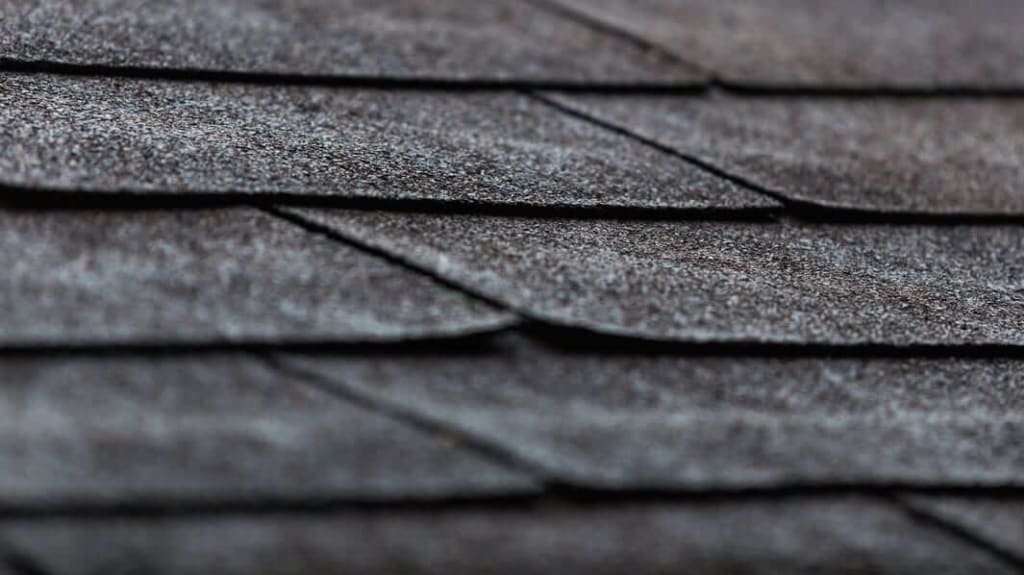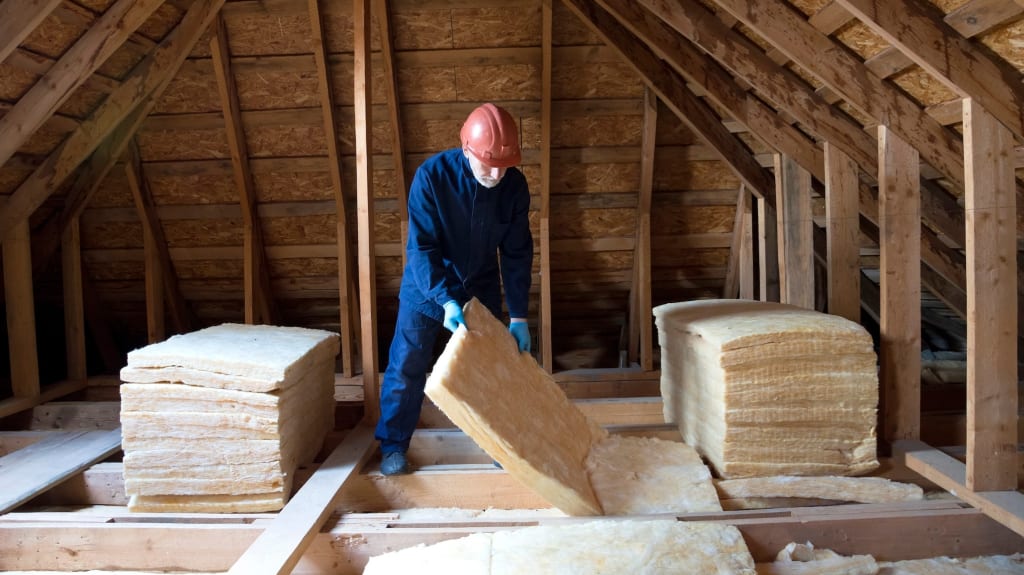Any contractor can tell you that the roof is the most important part of your home. If it’s not in good condition – or, worse yet, if it was poorly constructed — you run the risk of water infiltration and mould. To reach its maximum lifespan, your roof needs regular care. Our roofing experts have compiled a list of things to look out for while doing a roof inspection, as well as how to tell when it needs to be repaired or replaced.
Roof inspection: Key elements
A basic roof inspection is pretty simple: take a look around and see if anything seems amiss. The Canadian Roofing Contractors Association recommends semi-annual inspections during fll and spring, before freezing and after thawing. If the roof is visible from ground level or you can access it safely, here’s a list of things to check:
Roof surface. Is there debris? Are the shingles buckling or blistering? Any mould?
Flashings. Do they look damaged or corroded? Are there any broken joints?
Walks. Is there debris preventing proper drainage?
Accessories. Check on any add-ons, such as TV antennas and ventilators. Are the skylights in good condition?
Parapet walls. Is the mortar intact? Is the capping and membrane in good shape?
Roof drains. Is there water pooling on your roof for more than 48 hours after heavy rainfall?
Gutters and downspout. Is there any gunk clogging them? Are they still in good shape?
If you notice any damage, call a professional roofer to get it thoroughly inspected. Avoid the expensive repairs that come from water damage. And please get your roof replaced before it starts looking like this.

Attics: The forgotten element in roof inspections
Hard to access (not to mention uninviting), the attic is often overlooked during an inspection. When you do have it inspected, take the opportunity to check it out for yourself! If your attic is safe and accessible, ask yourself the following questions:
Is it damp? Are there any strong or unusual odours?
Are any of the roof trusses (roof structure, framing) sagging or unstable?
Are there visible stains, fungus, or mould?
After heavy rain, is water visible on any surfaces?
Are the insulating materials (mineral wool, urethane, etc.) in good condition and properly positioned?
If you answered “yes” to any of these questions, your attic may be poorly ventilated (one of the most important elements of your roof) or your shingles may be in poor condition. In these instances, you should have everything inspected by a professional to minimize damage and costs.
Inspecting walls and ceilings
You may be wondering what walls and ceilings have to do with a roof inspection. While your roof’s exterior appearance can tell you a lot, there are a few crucial things in your home’s interior and on your exterior siding that you should look out for. The following are signs that you have water damage caused by a leaky roof:
High humidity levels in the house
Cracks in the interior walls
Water stains on the interior walls
Paint blisters or bubbles on the ceiling or walls
Warped finishes on the exterior walls
Deteriorating exterior siding near the roof
If you spot any of these issues, you’ll need to act fast to repair the damage. If the water infiltration is severe enough to have impacted your walls, chances are you’ll need to replace your roof altogether.
Roofs damaged by wind
High winds are becoming more common, and their frequency and force will only increase in the future. More and more roofs will be damaged over time, increasing the risk of significant water infiltration when it rains.
Even without rain or hail, high winds can damage your roof by creating stress points in certain areas and weakening them. If the shingles aren’t installed properly or are loose, the wind can simply tear them off. And once one shingle goes, it won’t be long before others start to follow.
On flat roofs, membranes (elastomer, TPO, or EPDM) can also be torn off by strong winds if they’ve not been properly installed and maintained.
Whether flat or sloped, when a roof suffers wind damage it’s crucial to have it repaired or replaced as soon as possible. If you don’t address it right away, you run the risk of water infiltration and mould.

Hidden defects when buying a property
If you’ve recently purchased a house or commercial building, you may find hidden defects even if you’ve had the property inspected by a professional. A roof that’s been damaged, neglected, or poorly constructed, or that has a poorly installed membrane, can be an unpleasant surprise for new owners. In fact, 15% of hidden defects in Quebec are roofing problems (article in French only). If you notice hidden defects after purchasing a property, there are several ways to find help. Éducaloi offers a list of steps to follow if you should find yourself in this unfortunate situation.
Roof maintenance
Maintaining your roof can extend its useful life considerably and save you money in the long run.
Clean your gutters
Once the leaves start falling, it’s important to clean your gutters regularly to keep them from clogging and breaking the downspout. Maintenance is quick and prevents water overflows and potential damage to the roof and gutters.
All you need is a ladder tall enough to safely reach your gutters (to avoid damage, don’t place the ladder directly on the gutter), gloves, a garden trowel if necessary, and some free time. If you’re unable to clean your gutter yourself, there are services that can help.
Start by removing debris near the downspout using a trowel. Use a hose to flush out the rest of your gutter, starting at the far end and moving towards the downspout. To clear the downspout, simply detach it from the roof and flush it using a hose. Then, reattach it and fill it with water to check for leaks. You can then inspect the brackets, interlocking sections of the downspout, fittings, etc., and make repairs as needed.
Clear snow from your roof
Snow shows us no mercy. We clear it from our driveways, cars, and sidewalks, but we often forget that it piles up on our roof! If you let snow build up over time, your roof trusses may get damaged from the excess weight.
That said, don’t try and remove snow and ice from your roof on your own, especially if it’s sloped. In fact, Desjardins strongly recommends you rely on professionals to prevent injuries. However, if you decide to clear it yourself, be sure to leave a thin layer of snow on your roof to avoid damaging the shingles with your shovel.
Remove algae from your roof
If you notice dark or green streaks on your roof, you might have some algae or moss to deal with. While it’s fairly easy to remove, it’s even easier to prevent. If you have trees near your house, the foliage might be causing it to grow. CAA Quebec recommends installing a copper or zinc strip near the ridge of your roof. When it rains, it’ll rust and coat the roof in copper oxide. This’ll make your roof resistant to algae.
However, if algae or moss take over your roof, you’ll need to clean it using a standard garden hose. Avoid using a pressure hose, as it could seriously damage your shingles. If there’s a lot of it, start by treating your shingles with a roof cleaner from your local hardware store and then hose it off. If you can access your roof safely, you can do this on your own. If not, reach out to a professional!
To repair or to replace… your roof, that is
Before you start thinking of replacing or repairing your roof, first ask yourself if your roof has reached the end of its useful life. If it has, then it should be replaced since the cost of repairing water damage often exceeds the cost of a new roof. To give you an idea, here are the average lifespans of different types of roofs.
Type of roof | Lifespan |
Asphalt shingles | 15 to 25 years |
TPO and EPDM | 25 to 30 years |
Elastomeric membrane | 20 to 30 years |
Multilayer (gravel and bitumen) | 15 to 30 years |
Sheet metal | 50+ years |
Slate | 75 to 150 years |
Keep in mind that these lifespans are for roofs that undergo regular maintenance. If you need to replace your roof, be sure to hire a professional roofer. You’ll need an invoice for the manufacturer’s warranty and for your insurance provider if you ever need to make a claim.
If your roof is still under the legal warranty provided by your contractor when it was repaired or built, reach out to them. After inspection, they’ll tell you what needs to be done. If your roof needs to be replaced before it’s reached the end of its normal lifespan, the legal warranty may apply.

When should you replace your roof?
If your roof looks worn, is reaching the end of its lifespan, or is leaking heat or cool air (causing your hydro bill to jump), it may be time to replace it. And, if several areas of your roof are damaged, it might be more practical to get it replaced than to make repairs, as the price difference is often minimal.
Don’t forget that in Quebec, roof replacements aren’t done in winter. Asphalt shingles tend to stiffen as soon as the temperature drops below 10 degrees Celsius, making them less pliable and thus difficult to install.
When should you repair your roof?
If you notice any damage on your roof, it’s a good idea to get it checked out. Not only will it help you avoid structural damage, but it’ll also help you avoid health risks like mould. Here are a few telltale signs that you need a professional to repair your roof:
Pungent and damp odours
Brown stains on the ceiling
Water leaking into your house during heavy rainfall
Thankfully, it’s entirely possible that your roof might only need minor repairs to fix the issue, thus keeping costs relatively low.
Proper roof maintenance means guaranteed savings!
Maintaining your roof is crucial to maximizing its useful life and avoiding unnecessary repair and renovation expenses. Taking the time to do a thorough roof inspection, either yourself or by hiring a professional roofer, ensures that the value of your property is maintained.




